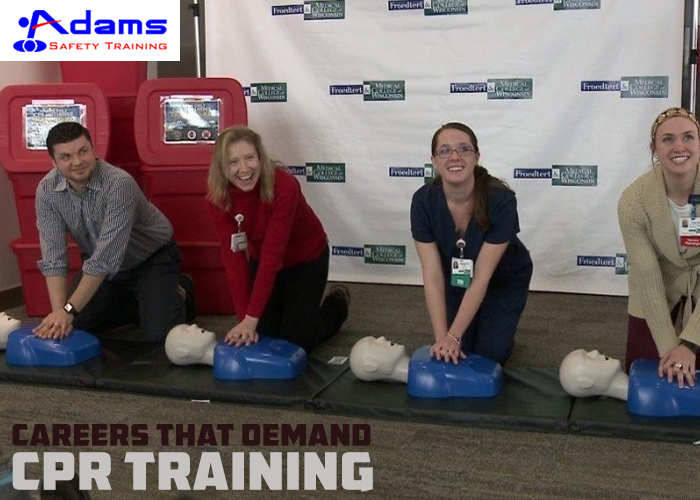CPR training is required not only in healthcare and medical sectors, but also demanded in other professions. A CPR provider should be well trained and should follow the CPR guidelines to save life of the victim. There are several jobs that require CPR training. Let us discuss them below:

Life guard
It is indispensable to have CPR training before becoming a lifeguard, as lifeguards are required on pool side, ships, beaches and seashores.
Fireman
Firemen not only help people to get rid of fire by killing it but also, they save life of the victim with their CPR training skills.
Coach
Coaches, especially in schools must have CPR training. CPR trained coaches avoid any kind of mishap in schools and take care of the students.
Police
Apart from looking the law and order of the city, police also provide CPR to save life when any accident occurs.
Medical technician
Medical technicians not only control the medical machines but, also give CPR in emergencies to the patients.
Construction workers
It is utter important for the construction workers to have CPR training as there are always chances of accidents on the construction sites. Well trained construction workers can provide first aid in any emergency and save life.
Doctors
To become a doctor it is essentially important to have CPR training.
Nurses
It is essential for nurses in hospital to have EPF training.
Nurse assistants
Nurse assistants should also know about EPF so that they can give EPF to patient in emergency, whenever the nurse and doctors are unavailable.
Soldiers
Soldiers not only protect life of the nation but they save lives of people stuck in any mishap. Hence, they are also required to have EPF training.



